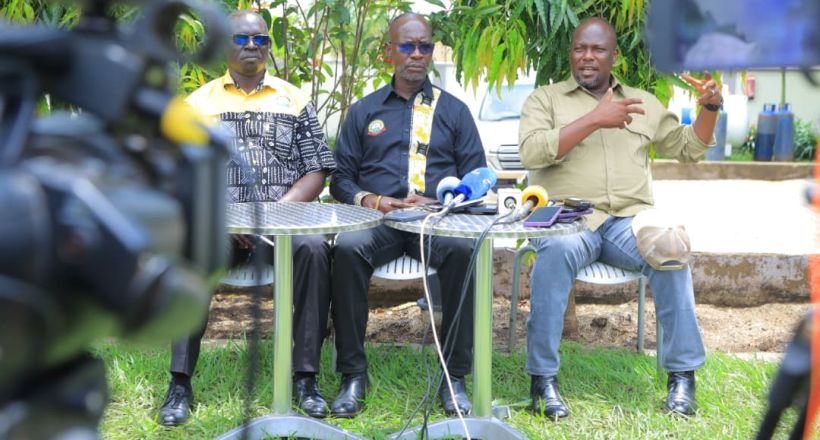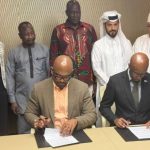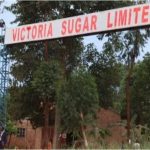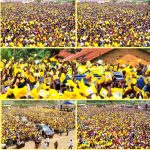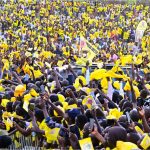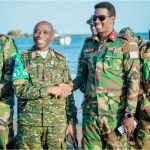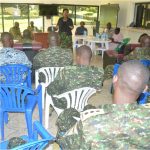Published on 16/10/2025
When the National Resistance Movement (NRM) took power in 1986 under the leadership of President Yoweri Kaguta Museveni, West Nile was a land in ruins—ravaged by war, fear, and displacement.
Villages lay desolate, families were scattered across refugee camps in Congo and South Sudan, and the once-vibrant region had become a front line of conflict.

Today, nearly four decades later, the story of West Nile reads differently: one of peace, stability, and transformation.

According to the NRM Secretary General Richard Todwong, West Nile’s journey from a war zone to a hub of peace and development is one of the most tangible testaments to the government’s vision of restoring security and service delivery across Uganda.
“By 1986, West Nile had only three districts, Moyo, Arua, and Nebbi,” Todwong recalls.
“Now we have thirteen. These administrative structures were created to ensure that government services reach every corner of the region.”
He paints a picture of contrast between the past and present: a region once cut off from the rest of the country now linked by tarmac roads, powered by electricity, and thriving with trade and education.
“By 1986, there was no tarmac road linking West Nile to Uganda,” he said.
“Today, from Kampala up to Koboko and the borders of Congo and South Sudan, you drive on tarmac. We are connected by electricity through the national grid. West Nile now generates its own power from the Nyagak hydro station.”
Hamson Obua: NRM’s Northern Torchbearer Speaks
NRM Vice Chairperson for Northern Region Hon. Hamson Obua echoed Todwong’s sentiments, emphasizing that the transformation of West Nile is proof that peace and political stability under President Museveni are the true foundations of development.
“What we are witnessing in West Nile today is not accidental; it is a product of deliberate and consistent effort by the NRM government,” Obua said. “This is a region that once knew the sound of gunfire more than the sound of school bells, but today it is a model of peace and productivity.”
He further noted that the political maturity of the people of West Nile has been key to sustaining this progress.
“The people here have understood that sustainable development can only happen in an environment of peace,” he remarked. “That is why you see overwhelming support for the NRM and for President Museveni; they know who delivered that peace.”
Obua also urged unity among NRM members ahead of the 2026 general elections.
“Our task as leaders is to consolidate this peace by remaining united,” he added. “Internal democracy is important, but after the primaries, we must come together under one flag, one symbol—the bus—so that we do not divide the support base that has taken decades to build.”
He concluded with a message of optimism for the region’s future:
“The next chapter for West Nile is wealth creation. With peace achieved, our focus now must be on transforming every household. The Parish Development Model is not just a government program—it is a vehicle for grassroots prosperity.”
From Refugees to Homeowners
Jackson Atima, the Member of Parliament for Arua City, remembers a time when the region’s people lived in exile, fleeing endless cycles of violence.
“This region was a wilderness,” Atima says. “People lived in refugee camps in Congo and South Sudan. But when the NRM took over, they were called back home to rebuild their lives.”
That call has since borne fruit. Peace and security have anchored development across all sectors. Schools, hospitals, roads, and trade centers have sprung up where there were once ruins.
Infrastructure and Connectivity
One of the most visible transformations has been in infrastructure.
Atima credits the NRM government for connecting the region through modern road networks stretching from Karuma to the borders of DRC and South Sudan.
“Within districts, the road network is very clear,” he explains.
“This tells you the region has received development. Roads mean trade, access to services, and mobility—all of which were impossible before peace returned.”
The planned upgrade of Arua Airfield into an international airport, he adds, will further open the region to cross-border trade with the Democratic Republic of Congo, South Sudan, and even the Central African Republic.
“The Prime Minister assured us that a contractor has already been sought,” Atima says. “Once complete, this airport will transform our economy and make West Nile a true gateway to the Great Lakes region.”
Health and Education Gains
In the health sector, the story is one of expansion and modernization. Health Centre IIs across the region have been upgraded to Health Centre IIIs and IVs.
Arua Regional Referral Hospital, once in a sorry state, now boasts new departments including an ICU, a regional blood bank, and a modern outpatient wing.
Even more significantly, Yumbe District now hosts a second regional referral hospital, making West Nile the only region outside Kampala with two.
Education, too, has flourished. Where Uganda once had only Makerere University, West Nile now prides itself on Muni University, a public institution offering science and arts programs and nurturing the next generation of innovators and professionals.
“These are tangible signs that the NRM has invested in human capital,” Atima notes. “Our youth no longer have to go far to access higher education.”
Wealth Creation and Economic Empowerment
Peace has provided the foundation for prosperity. Government initiatives like the Parish Development Model (PDM), Youth Livelihood Fund, and Women Entrepreneurship Programs have helped lift families out of poverty.
“People testified how one million shillings grew into thirty million through these programs,” Atima recounts. “Households are transforming, and young people are becoming self-reliant.”
Todwong agrees, adding that NRM’s focus has now shifted from infrastructure to household empowerment.
“We have built the foundation—roads, electricity, schools, hospitals,” he says. “Now we must ensure that every household benefits from these opportunities.”
A Region at Peace
Perhaps the most profound change, however, is peace. Once the frontline of conflict, West Nile is now a hub of stability and even a host to refugees from neighboring countries.
“This area was a battleground,” Todwong reflects. “But today, we are proud to host refugees instead of producing them. That is the meaning of transformation.”
The Road Ahead
As the 2026 elections approach, leaders in the region say that the overwhelming support for President Museveni and the NRM is not just a matter of political loyalty—it is a reflection of gratitude for the restored dignity and progress.
“The region has every reason to support the NRM,” Atima affirms. “With the national grid now connected, with roads, hospitals, universities, and wealth creation programs in place, development is accelerating. We believe the future is even brighter.”
What was once a war-torn wilderness has become a corridor of peace, trade, and opportunity—a living example of how stability breeds development. And in the words of the NRM Secretary General:
“Ours is not just a campaign,” Todwong concludes. “It is a celebration of what West Nile—and Uganda—have achieved together under peace.”

